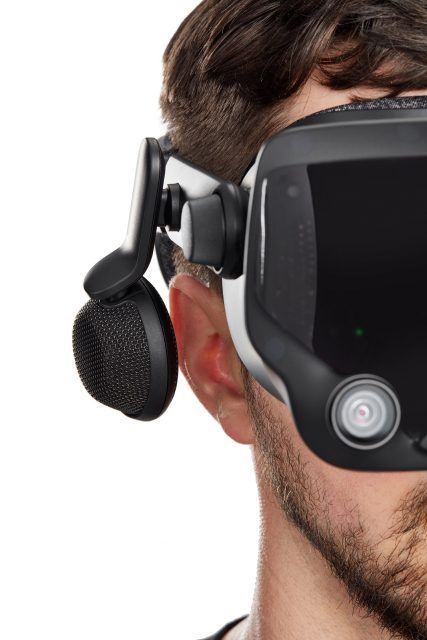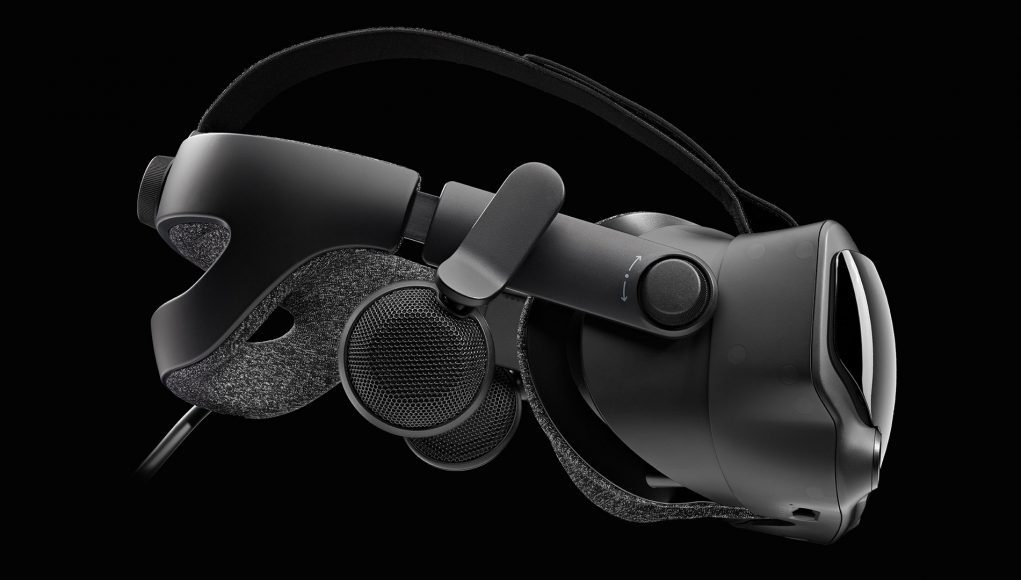Valve finally revealed their new Index headset and it’s got some pretty impressive specs. From improved resolution and field of view to a display which can run up to 144Hz, there’s a lot to like. But one of the headset’s most surprising innovations is its headphones.
I love seeing ‘stupid simple’ design—those things that seem so obvious once you see them for the first time, but somehow never thought of before.
The ‘off-ear’ headphones on Valve’s Index headset definitely fit the ‘stupid simple’ definition for me. Normal headphones need the friction of your head and ears to keep them in place. But if you’re wearing a VR headset which is already secure on your head, why not just ‘float’ the headphones near your ears so that they don’t get in the way or become uncomfortable?

Oculus Go was among the first headsets to eliminate on-ear headphones on a VR headset by moving to an ‘audio pipe’ solution which channels sound down the head straps to openings near your ears. That means you don’t have headphones to get in your way or be adjusted every time you put the headset on, nor the discomfort of having something pressing against your sensitive ears during long play sessions. That’s a good thing, but it comes at a pretty substantial cost to audio quality, not just in range but also in positional audio accuracy—as it’s easy to tell that the sound is coming from a point in space which is substantially on one side of your ear and not the other.

Valve’s ‘floating’ headphone solution effectively has all the same benefits of the audio pipe solution—getting the headphones out of the way when putting the headset on and eliminating anything from pressing against your ears—but enables far, far better audio quality and positional audio accuracy (because the positioning of the headphones allows for equal amplitude across the ear). With nothing touching your ears—but the sound still entering the ear ‘directly’—it can even feel more immersive than on-ear headphones. The unique shape of your ear plays a major role in how you spatialize sound; the sound emitted by Index headphones is able interact with much more of the geometry of your ear compared to an on-ear headphone pressed directly against your ear.
‘Floating’ the headphones also makes it easier to use larger, higher quality drivers. Valve says Index’s headphones are actually “speakers,” not headphone drivers; the company says the headset uses “composite honeycomb-panel speaker drivers” which “provide their full-frequency range across a nearly 180-degree dispersion pattern.”
Spec wise, Valve claims the following on the speakers: “37.5mm off-ear Balanced Mode Radiators (BMR), Frequency Response: 40Hz – 24KHz, Impedance: 6 Ohm, SPL: 98.96 dBSPL at 1cm.” Also worth noting, if for some reason you hate Index’s headphones, they’re removable, and the headset includes a 3.5mm audio jack for plugging in your own.

The difference in audio quality on Index compared to an audio pipe solution (like on Oculus Go or Quest Quest) is vast—not even in the same league. Positional accuracy also stands to be substantially better. Even compared to the Oculus Rift, which I would say has the best audio of any headset currently available, Index’s speakers are clearly a step up.
Read our full Index hands-on preview
The only major downside to this approach is a lack of isolation from external sound, but that’s also an issue with the audio pipe approach. Otherwise, the benefits are so great—at least as far as Valve has achieved—that I expect we’ll be seeing a lot of these floating ‘off-ear’ headphones on future headsets.







